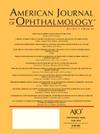人工晶状体度数计算项目:36个公式的准确性。
IF 4.1
1区 医学
Q1 OPHTHALMOLOGY
引用次数: 0
摘要
目的探讨36种未手术眼人工晶状体度数计算公式的屈光精度。设计回顾性准确性和效度分析。655例接受超声乳化术和Tecnis 1 ZCB00人工晶体植入术的患者(Johnson & Johnson Vision, Jacksonville, FL, USA)。方法对3C 2.0、Eom、Hoffer H、Hoffer H-5、Fam调整法、Norrby回归公式(Norrby RF)、Norrby薄透镜近轴射线追踪(Norrby RT)、VRF Cooke修正轴向长度(VRF CMAL)等36个公式进行评价。术前使用IOLMaster 700 (Carl Zeiss Meditec AG)进行光学生物测定。所有描述性统计数据和在预测误差阈值内的眼睛百分比用优化的晶状体常数进行评估。主要结局指标采用公式绩效指数(FPI)和亚组公式绩效指数(FPI sub)作为主要结局指标。结果VRF- g(0.590)、Hoffer QST(0.575)、VRF CMAL(0.574)、Eom(0.572)、EVO 2.0(0.569)和Kane(0.568)公式的FPI指数最高。异方差检验显示各配方间差异有统计学意义(P < 0.05)。VRF-G (0.353 D)、EVO 2.0 (0.362 D)、Kane (0.366 D)、Hoffer QST (0.371 D)、Eom (0.372 D)的标准差均低于其他方法(P < 0.05)。PE在±0.50 D范围内的眼睛比例最高的是VRF-G(87.48%)、Kane(86.41%)、Hoffer QST(86.26%)和PEARL-DGS(86.26%)。结论现代人工晶状体度数计算公式(Eom、EVO 2.0、Hoffer QST、VRF CMAL和VRF- g)与传统和更新的方法相比,在所有眼轴长度范围内均提高了精度。CMAL方法提高了VRF公式的精度。本文章由计算机程序翻译,如有差异,请以英文原文为准。
IOL power calculation project: accuracy of 36 formulas.
PURPOSE
To ascertain the refractive accuracy of 36 intraocular lens (IOL) power calculation formulas in unoperated eyes.
DESIGN
Retrospective accuracy and validity analysis.
PARTICIPANTS
Six hundred fifty-five patients undergoing phacoemulsification and implantation of the Tecnis 1 ZCB00 IOL (Johnson & Johnson Vision, Jacksonville, FL, USA).
METHODS
Thirty-six formulas were evaluated including some that have never been tested, such as 3C 2.0, Eom, Hoffer H, Hoffer H-5, Fam adjusted methods, Norrby Regression Formula (Norrby RF), Norrby thin lens paraxial Ray-Tracing (Norrby RT), and VRF Cooke modified axial length (VRF CMAL). Optical biometry with the IOLMaster 700 (Carl Zeiss Meditec AG) was performed preoperatively. All descriptive statistics and the percentage of eyes within prediction error thresholds were evaluated with optimized lens constants.
MAIN OUTCOME MEASURES
The Formula Performance Index (FPI) and Formula Performance Index for subgroup (FPI sub) were used as the primary formula outcomes.
RESULTS
The highest FPI indexes were yielded by the VRF-G (0.590), Hoffer QST (0.575), VRF CMAL (0.574), Eom (0.572), EVO 2.0 (0.569), and Kane (0.568) formulas. The heteroscedastic test revealed statistically significant differences (P < 0.05) among formulas. The standard deviation (SD) of VRF-G (0.353 D), EVO 2.0 (0.362 D), Kane (0.366 D), Hoffer QST (0.371 D), and Eom (0.372 D) were lower than other methods (P < 0.05). The highest percentage of eyes with a PE within ±0.50 D was achieved by VRF-G (87.48%), Kane (86.41%), Hoffer QST (86.26%), and PEARL-DGS (86.26%).
CONCLUSION
Contemporary IOL power calculation formulas (Eom, EVO 2.0, Hoffer QST, VRF CMAL, and VRF-G) improved accuracy in all axial length ranges compared to traditional and updated methods. The CMAL method raised the accuracy of the VRF formula.
求助全文
通过发布文献求助,成功后即可免费获取论文全文。
去求助
来源期刊
CiteScore
9.20
自引率
7.10%
发文量
406
审稿时长
36 days
期刊介绍:
The American Journal of Ophthalmology is a peer-reviewed, scientific publication that welcomes the submission of original, previously unpublished manuscripts directed to ophthalmologists and visual science specialists describing clinical investigations, clinical observations, and clinically relevant laboratory investigations. Published monthly since 1884, the full text of the American Journal of Ophthalmology and supplementary material are also presented online at www.AJO.com and on ScienceDirect.
The American Journal of Ophthalmology publishes Full-Length Articles, Perspectives, Editorials, Correspondences, Books Reports and Announcements. Brief Reports and Case Reports are no longer published. We recommend submitting Brief Reports and Case Reports to our companion publication, the American Journal of Ophthalmology Case Reports.
Manuscripts are accepted with the understanding that they have not been and will not be published elsewhere substantially in any format, and that there are no ethical problems with the content or data collection. Authors may be requested to produce the data upon which the manuscript is based and to answer expeditiously any questions about the manuscript or its authors.

 求助内容:
求助内容: 应助结果提醒方式:
应助结果提醒方式:


